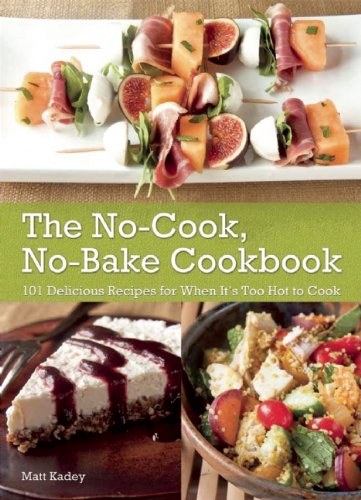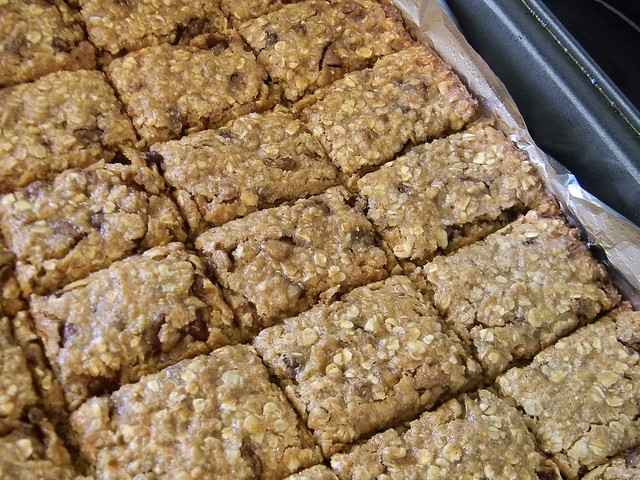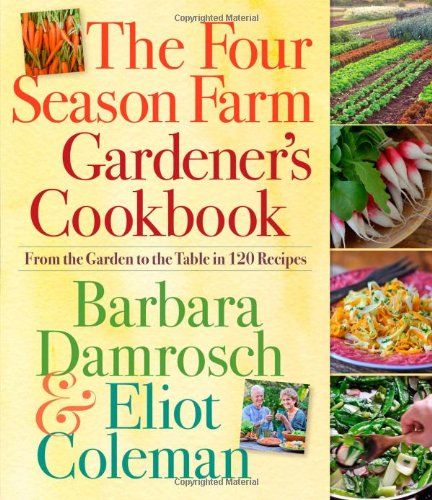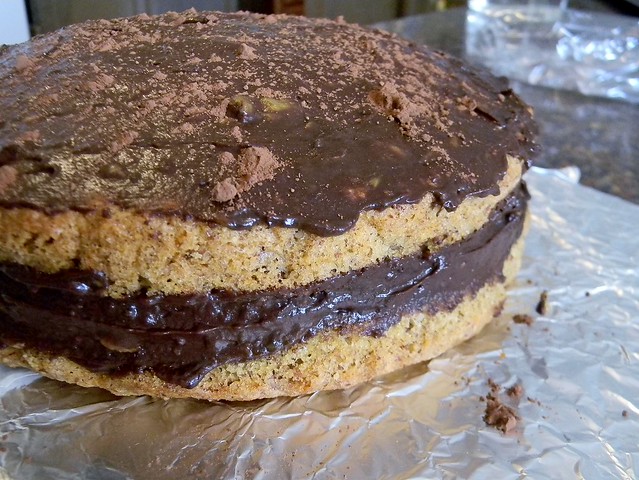Author: Matt Kadey
Publisher: Ulysses Press (2013)
 It’s hard to believe that we’re almost into August. Generally
known as the hottest, most humid and least comfortable of the Summer months, it’s
a time when everyone would rather be outside swimming, gardening, or golfing –
definitely not inside heating up the
oven. That said, we all have to eat whether we’re confronted by the mid-summer
heat or chilled to the bone in February. Matt Kadey tackled the “Summer supper”
conundrum in his new cookbook: The No-Cook No-Bake Cookbook: 101 Delicious
Recipes for When It's Too Hot to Cook. For
the purposes of this review, I’ve abbreviated the title to NCNB.
It’s hard to believe that we’re almost into August. Generally
known as the hottest, most humid and least comfortable of the Summer months, it’s
a time when everyone would rather be outside swimming, gardening, or golfing –
definitely not inside heating up the
oven. That said, we all have to eat whether we’re confronted by the mid-summer
heat or chilled to the bone in February. Matt Kadey tackled the “Summer supper”
conundrum in his new cookbook: The No-Cook No-Bake Cookbook: 101 Delicious
Recipes for When It's Too Hot to Cook. For
the purposes of this review, I’ve abbreviated the title to NCNB.
NCNB takes the classic staples of Summer cooking –
fresh produce, quick-mix condiments and cooling dairy – and adds pantry items
like canned beans and fish, nuts and breads to transform them into
gourmet-looking fare. Far from your standard salads and ice cream, Kadey
instead suggests Watermelon Jicama Salad
(p. 39), Shrimp and Noodles with
Sweet and Sour Sauce (p. 72) and Cherry
Granita (p. 113). If a recipe calls for something cooked (like a cereal or
pasta), a combination of boiling water and ingredients like oats, rice noodles
and couscous does the trick. The occasional shrimp called for in NCNB is
purchased in precooked, frozen form, while tuna or salmon is canned – not only
are these cook-free options, but even organically purchased they are economical
ways to include seafood in the diet. The few chicken-based recipes make use of
the readily available rotisserie chickens from the supermarket, and after Kadey
finishes with them it’s hard to tell they weren’t made in your own home. Most
of the protein options in NCNB are actually the most convenient and
nutritious items in the pantry and fridge – beans, lentils and tofu. Nuts and
dairy add some variety as well, so the “un-cook” need never worry about boredom
or nutrition deficiencies! Despite the decadent and hearty looking recipes in
this book, the nutrition aspect of them is in good standing thanks to Kadey’s
nutrition background (he is a registered dietitian, nutrition writer and recipe
developer). Luckily, the food itself doesn’t necessarily taste “healthy” – just
delicious!
One of the things I particularly liked about this book
was that it wasn’t a “raw food” or “health food” collection. While there are a
few recipes that appear to be culled from the raw foodist circle (Carrot Cake Muffins (p. 137), Applesauce Pie (p. 139) and a few other
desserts in particular), the majority of items are more assembly jobs of
ready-to-eat elements. I wouldn’t suggest this book for a strict vegan (there
is a lot of dairy and other assorted animal products), nor would I recommend it
to someone with nut allergies, but most vegetarians will be able to make most
of the recipes in NCNB by either swapping in vegetable proteins or
simply leaving out the meat in favour of more vegetables (a favourable option
for most, as the amount of protein in a typical diet is generally far too much).
My personal favourite in the collection is the sushi bar-esque Cucumber Seaweed Salad (p. 45), which
made a fantastic meal topped with marinated tofu. The Smoked Tofu Wraps (p. 98), another vegan option, are on my to-try
list as well, and is flavourful enough that it would be a good option for
anyone regardless of dietary preference. Unfortunately I wasn’t as impressed
with the Pizza Stacks (p. 92), which tasted
too oily and salty for what should have been a relatively light meal.
Whether you are coming home sweating from a run,
retreating from weeding duties or simply not in the mood to heat up the
kitchen, you will likely find an option in Matt Kadey’s The No-Cook No-Bake
Cookbook: 101 Delicious Recipes for When It's Too Hot to Cook. Filled with
fresh twists on cooling fare for every meal of the day, the dog days of Summer
have become the best excuse to get back to the kitchen... and out again!








